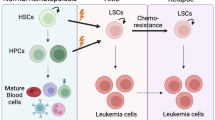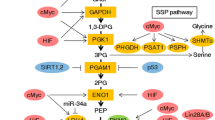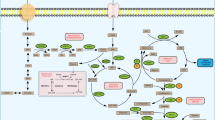Abstract
Neuroblastoma (NB) is a childhood malignancy of the sympathetic nervous system and is commonly studied using the SH-SY5Y cell line. Its neoplastic and neurodevelopmental manifestations are characterised by a high glucose demand which maintains its high proliferative capacity. This metabolic phenotype may be utilised in dietary therapies such as the ketone diet which alter substrate availability and thus starve NB cells of their preferred biosynthetic requirements. However, the effects of ketone metabolism on cancer growth remain poorly understood due to the involvement of other metabolic substrates in experimental paradigms and complexities underlying the Warburg effect. We investigated how the primary ketone body beta-hydroxybutyrate (βOHB) affects the growth of SH-SY5Y NB cells in the presence or absence of culture metabolic substrates. We demonstrated that while glucose deprivation reduced the growth and viability of SH-SY5Y cells, they proliferated and were initially unaffected by the addition of βOHB. However, a growth response to βOHB was subsequently revealed in media containing low levels of glucose, as well as in glucose and pyruvate deprived conditions. These data shed light on the roles of metabolic substrate availability as key determinants of the responses of SH-SY5Y NB cells to ketone supplementation.




Similar content being viewed by others
Data Availability
The datasets generated during and/or analysed during the current study are available from the corresponding author on reasonable request.
References
Xie HR, Hu LS, Li GY (2010) SH-SY5Y human neuroblastoma cell line: in vitro cell model of dopaminergic neurons in Parkinson’s disease. Chin. Med. J. (Engl) 123:1086–1092. https://doi.org/10.3760/cma.j.issn.0366-6999.2010.08.021
Matthay KK, Maris JM, Schleiermacher G, Nakagawara A, Mackall CL, Diller L, Weiss WA (2016) Neuroblastoma. Nat Rev Dis Prim 2:1–21. https://doi.org/10.1038/nrdp.2016.78
Brodeur GM (2003) Neuroblastoma: biological insights into a clinical enigma. Nat Rev Cancer 3:203–216. https://doi.org/10.1038/nrc1014
Brodeur GM, Bagatell R (2014) Mechanisms of neuroblastoma regression. Nat Rev Clin Oncol 11:704–713. https://doi.org/10.1038/nrclinonc.2014.168
Kwiatkowski JL, Rutkowski JL, Yamashiro DJ, Tennekoon GI, Brodeur GM (1998) Schwann cell-conditioned medium promotes neuroblastoma survival and differentiation1. Cancer Res 58:4602–4606
Miyazawa H, Aulehla A (2018) Revisiting the role of metabolism during development. Development. https://doi.org/10.1242/dev.131110
DeBerardinis RJ, Lum JJ, Hatzivassiliou G, Thompson CB (2008) The Biology of cancer: metabolic reprogramming fuels cell growth and proliferation. Cell Metab 7:11–20. https://doi.org/10.1016/j.cmet.2007.10.002
Warburg O (1925) The metabolism of carcinoma cells. J Cancer Res 9:148–163. https://doi.org/10.1158/jcr.1925.148
Liberti MV, Locasale JW (2016) The warburg effect: how does it benefit cancer cells? Trends Biochem Sci 41:211–218. https://doi.org/10.1016/j.tibs.2015.12.001
Poff AM, Ari C, Arnold P, Seyfried TN, D’Agostino DP (2014) Ketone supplementation decreases tumor cell viability and prolongs survival of mice with metastatic cancer. Int J Cancer 135:1711–1720. https://doi.org/10.1002/ijc.28809
Seyfried TN (2015) Cancer as a mitochondrial metabolic disease. Front Cell Dev Biol. https://doi.org/10.3389/fcell.2015.00043
Rodrigues LM, Uribe-Lewis S, Madhu B, Honess DJ, Stubbs M, Griffiths JR (2017) The action of β-hydroxybutyrate on the growth, metabolism and global histone H3 acetylation of spontaneous mouse mammary tumours: evidence of a β-hydroxybutyrate paradox. Cancer Metab. 5:4. https://doi.org/10.1186/s40170-017-0166-z
Skinner R, Trujillo A, Ma X, Beierle EA (2009) Ketone bodies inhibit the viability of human neuroblastoma cells. J Pediatr Surg 44:212–216. https://doi.org/10.1016/j.jpedsurg.2008.10.042
Shukla SK, Gebregiworgis T, Purohit V, Chaika NV, Gunda V, Radhakrishnan P, Mehla K, Pipinos II, Powers R, Yu F, Singh PK (2014) Metabolic reprogramming induced by ketone bodies diminishes pancreatic cancer cachexia. Cancer Metab. 2:18. https://doi.org/10.1186/2049-3002-2-18
Martuscello RT, Vedam-Mai V, McCarthy DJ, Schmoll ME, Jundi MA, Louviere CD, Griffith BG, Skinner CL, Suslov O, Deleyrolle LP, Reynolds BA (2016) A supplemented high-fat low-carbohydrate diet for the treatment of glioblastoma. Clin Cancer Res 22:2482–2495. https://doi.org/10.1158/1078-0432.CCR-15-0916
Martinez-Outschoorn UE, Prisco M, Ertel A, Tsirigos A, Lin Z, Pavlides S, Wang C, Flomenberg N, Knudsen ES, Howell A, Pestell RG, Sotgia F, Lisanti MP (2011) Ketones and lactate increase cancer cell "stemness," driving recurrence, metastasis and poor clinical outcome in breast cancer: achieving personalized medicine via Metabolo-Genomics. Cell Cycle 10:1271–1286. https://doi.org/10.4161/cc.10.8.15330
Bonuccelli G, Tsirigos A, Whitaker-Menezes D, Pavlides S, Pestell RG, Chiavarina B, Frank PG, Flomenberg N, Howell A, Martinez-Outschoorn UE, Sotgia F, Lisanti MP (2010) Ketones and lactate "fuel" tumor growth and metastasis: Evidence that epithelial cancer cells use oxidative mitochondrial metabolism. Cell Cycle 9:3506–3514. https://doi.org/10.4161/cc.9.17.12731
Whitaker-Menezes D, Martinez-Outschoorn UE, Lin Z, Ertel A, Flomenberg N, Witkiewicz AK, Birbe RC, Howell A, Pavlides S, Gandara R, Pestell RG, Sotgia F, Philp NJ, Lisanti MP (2011) Evidence for a stromal-epithelial "lactate shuttle" in human tumors: MCT4 is a marker of oxidative stress in cancer-associated fibroblasts. Cell Cycle 10:1772–1783. https://doi.org/10.4161/cc.10.11.15659
Bartmann C, Janaki Raman SR, Flöter J, Schulze A, Bahlke K, Willingstorfer J, Strunz M, Wöckel A, Klement RJ, Kapp M, Djuzenova CS, Otto C, Kämmerer U (2018) Beta-hydroxybutyrate (3-OHB) can influence the energetic phenotype of breast cancer cells, but does not impact their proliferation and the response to chemotherapy or radiation. Cancer Metab 6:8. https://doi.org/10.1186/s40170-018-0180-9
Cantor JR, Abu-Remaileh M, Kanarek N, Freinkman E, Gao X, Louissaint A, Lewis CA, Sabatini DM, Sabatini DM (2017) Physiologic medium rewires cellular metabolism and reveals uric acid as an endogenous inhibitor of UMP synthase. Cell 169:258-272.e17. https://doi.org/10.1016/j.cell.2017.03.023
Schindelin J, Arganda-Carreras I, Frise E, Kaynig V, Longair M, Pietzsch T, Preibisch S, Rueden C, Saalfeld S, Schmid B, Tinevez JY, White DJ, Hartenstein V, Eliceiri K, Tomancak P, Cardona A (2012) Fiji: an open-source platform for biological-image analysis. Nat Methods 9:676–682. https://doi.org/10.1038/nmeth.2019
Ackermann T, Tardito S (2019) Cell culture medium formulation and its implications in cancer metabolism. Trends in Cancer 5:329–332. https://doi.org/10.1016/j.trecan.2019.05.004
Kaplon J, van Dam L, Peeper D (2015) Two-way communication between the metabolic and cell cycle machineries: the molecular basis. Cell Cycle 14:2022–2032. https://doi.org/10.1080/15384101.2015.1044172
Le A, Lane AN, Hamaker M, Bose S, Gouw A, Barbi J, Tsukamoto T, Rojas CJ, Slusher BS, Zhang H, Zimmerman LJ, Liebler DC, Slebos RJC, Lorkiewicz PK, Higashi RM, Fan TWM, Dang CV (2012) Glucose-independent glutamine metabolism via TCA cycling for proliferation and survival in B cells. Cell Metab 15:110–121. https://doi.org/10.1016/j.cmet.2011.12.009
Bajpai R, Matulis SM, Wei C, Nooka AK, Von Hollen HE, Lonial S, Boise LH, Shanmugam M (2016) Targeting glutamine metabolism in multiple myeloma enhances BIM binding to BCL-2 eliciting synthetic lethality to venetoclax. Oncogene 35:3955–3964. https://doi.org/10.1038/onc.2015.464
Cheng T, Sudderth J, Yang C, Mullen AR, Jin ES, Matés JM, DeBerardinis RJ (2011) Pyruvate carboxylase is required for glutamine-independent growth of tumor cells. Proc Natl Acad Sci USA 108:8674–8679. https://doi.org/10.1073/pnas.1016627108
Heiden MGV, Cantley LC, Thompson CB (2009) Understanding the warburg effect: The metabolic requirements of cell proliferation. Science 324:1029–1033. https://doi.org/10.1126/science.1160809
Martin SD, McGee SL (2019) A systematic flux analysis approach to identify metabolic vulnerabilities in human breast cancer cell lines. Cancer Metab 7:12. https://doi.org/10.1186/s40170-019-0207-x
Huang D, Li T, Wang L, Zhang L, Yan R, Li K, Xing S, Wu G, Hu L, Jia W, Lin SC, Dang CV, Song L, Gao P, Zhang H (2016) Hepatocellular carcinoma redirects to ketolysis for progression under nutrition deprivation stress. Cell Res 26:1112–1130. https://doi.org/10.1038/cr.2016.109
Yang C, Ko B, Hensley CT, Jiang L, Wasti AT, Kim J, Sudderth J, Calvaruso MA, Lumata L, Mitsche M, Rutter J, Merritt ME, DeBerardinis RJ (2014) Glutamine oxidation maintains the TCA cycle and cell survival during impaired mitochondrial pyruvate transport. Mol Cell 56:414–424. https://doi.org/10.1016/j.molcel.2014.09.025
Owen OE, Kalhan SC, Hanson RW (2002) The key role of anaplerosis and cataplerosis for citric acid cycle function. J Biol Chem 277:30409–30412. https://doi.org/10.1074/jbc.R200006200
Neinast M, Murashige D, Arany Z (2019) Branched chain amino acids. Annu Rev Physiol 81:139–164. https://doi.org/10.1146/annurev-physiol-020518-114455
Halestrap AP, Wilson MC (2012) The monocarboxylate transporter family-Role and regulation. IUBMB Life 64:109–119. https://doi.org/10.1002/iub.572
Pérez-Escuredo J, Van Hée VF, Sboarina M, Falces J, Payen VL, Pellerin L, Sonveaux P (2016) Monocarboxylate transporters in the brain and in cancer. Biochim Biophys Acta 1863:2481–2497. https://doi.org/10.1016/j.bbamcr.2016.03.013
Tildon JT, McKenna MC, Stevenson JH (1994) Transport of 3-hydroxybutyrate by cultured rat brain astrocytes. Neurochem Res 19:1237–1242. https://doi.org/10.1007/BF01006812
McKenna MC (2012) Substrate competition studies demonstrate oxidative metabolism of glucose, glutamate, glutamine, lactate and 3-hydroxybutyrate in cortical astrocytes from rat brain. Neurochem Res 37:2613–2626. https://doi.org/10.1007/s11064-012-0901-3
Zambrano A, Molt M, Uribe E, Salas M (2019) Glut 1 in cancer cells and the inhibitory action of resveratrol as a potential therapeutic strategy. Int J Mol Sci. https://doi.org/10.3390/ijms20133374
Boado RJ, Pardridge WM (2002) Glucose deprivation and hypoxia increase the expression of the GLUT1 glucose transporter via a specific mRNA cis-acting regulatory element. J Neurochem 80:552–554. https://doi.org/10.1046/j.0022-3042.2001.00756.x
Yan J, Young ME, Cui L, Lopaschuk GD, Liao R, Tian R (2009) Increased glucose uptake and oxidation in mouse hearts prevent high fatty acid oxidation but cause cardiac dysfunction in diet-induced obesity. Circulation 119:2818–2828. https://doi.org/10.1161/CIRCULATIONAHA.108.832915
VandeVoorde J, Ackermann T, Pfetzer N, Sumpton D, Mackay G, Kalna G, Nixon C, Blyth K, Gottlieb E, Tardito S (2019) Improving the metabolic fidelity of cancer models with a physiological cell culture medium. Sci Adv 5:7314. https://doi.org/10.1126/sciadv.aau7314
Schmidt M, Pfetzer N, Schwab M, Strauss I, Kämmerer U (2011) Effects of a ketogenic diet on the quality of life in 16 patients with advanced cancer: a pilot trial. Nutr Metab 8:54. https://doi.org/10.1186/1743-7075-8-54
Urbain P, Strom L, Morawski L, Wehrle A, Deibert P, Bertz H (2017) Impact of a 6-week non-energy-restricted ketogenic diet on physical fitness, body composition and biochemical parameters in healthy adults. Nutr Metab (Lond). 14:17. https://doi.org/10.1186/s12986-017-0175-5
Dashti HM, Mathew TC, Hussein T, Asfar SK, Behbahani A, Khoursheed MA, Al-Sayer HM, Bo-Abbas YY, Al-Zaid NS (2004) Long-term effects of a ketogenic diet in obese patients. Exp Clin Cardiol 9:200–205
Courchesne-Loyer A, Croteau E, Castellano CA, St-Pierre V, Hennebelle M, Cunnane SC (2017) Inverse relationship between brain glucose and ketone metabolism in adults during short-term moderate dietary ketosis: A dual tracer quantitative positron emission tomography study. J Cereb Blood Flow Metab 37:2485–2493. https://doi.org/10.1177/0271678X16669366
Cryer PE (2007) Hypoglycemia, functional brain failure, and brain death. J Clin Invest 117:868–870. https://doi.org/10.1172/JCI31669
Yao T, Asayama Y (2017) Animal-cell culture media: History, characteristics, and current issues. Reprod Med Biol 16:99–117. https://doi.org/10.1002/rmb2.12024
Funding
No funding was received to assist with the preparation of this manuscript.
Author information
Authors and Affiliations
Corresponding author
Ethics declarations
Conflict of interest
The authors have no conflicts of interest to declare that are relevant to the content of this article.
Ethics Approval
Ethical approval was not required in the course of this study.
Additional information
Publisher's Note
Springer Nature remains neutral with regard to jurisdictional claims in published maps and institutional affiliations.
Supplementary information
Below is the link to the electronic supplementary material.
Rights and permissions
About this article
Cite this article
Alherz, M., Lee, D., Alshangiti, A. et al. The Growth Response to Beta-Hydroxybutyrate in SH-SY5Y Neuroblastoma Cells is Suppressed by Glucose and Pyruvate Supplementation. Neurochem Res 46, 701–709 (2021). https://doi.org/10.1007/s11064-020-03203-y
Received:
Revised:
Accepted:
Published:
Issue Date:
DOI: https://doi.org/10.1007/s11064-020-03203-y




